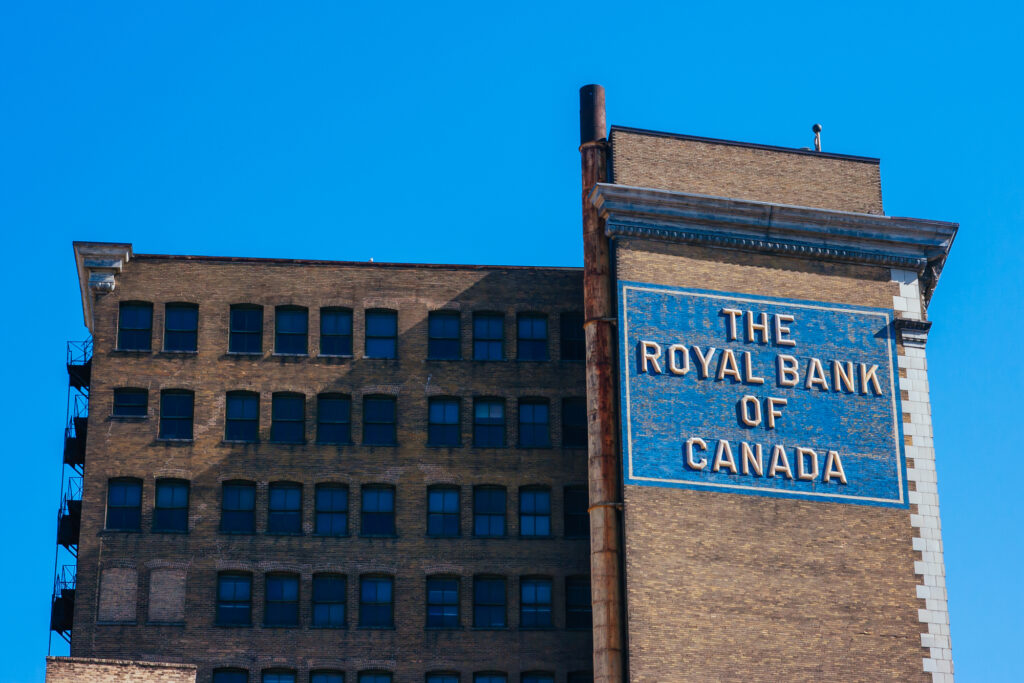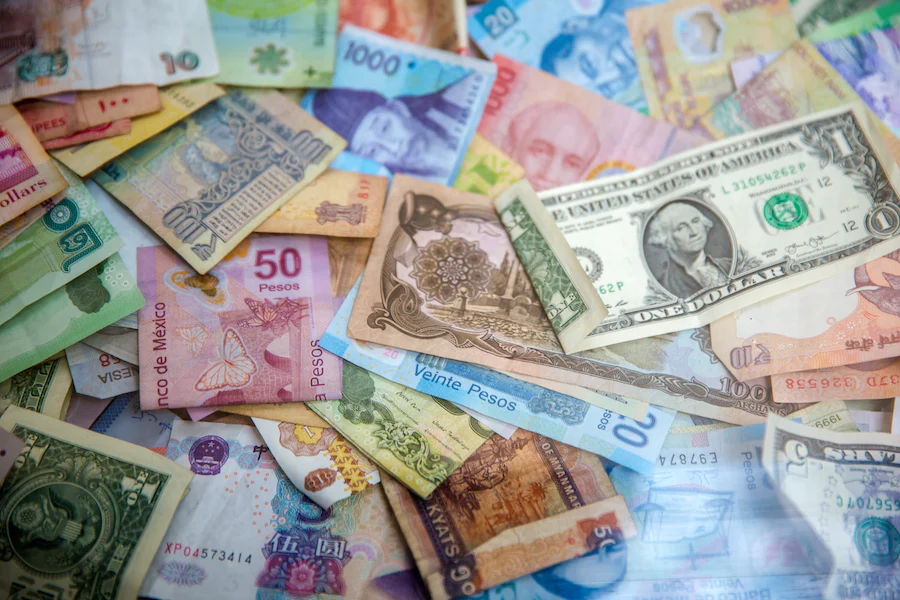What is the Bank of Canada?
The Bank of Canada is the nation’s central bank. It is the equivalent of the Federal Reserve in the United States of America. A central bank sometimes referred to as a reserve bank, is a national bank that manages a country’s monetary policies on a country-wide level.
In most countries, the central bank sets the benchmark interest rate to maintain a healthy exchange rate and control inflation through monitoring the consumer price index, increasing or decreasing the nation’s money supply in the case of excess demand or supply, handling the printing and coining of national currency, regulating commercial banks as sort of a governing council to prevent fraudulent or predatory behaviours, and can act as a lender if a financial crisis occurs. In addition, central banks also manage foreign exchange rates, government bonds, and gold reserves.
A central bank, such as the Bank of Canada, is a vital component of most countries’ financial systems beyond just setting the Canadian interest rate policy, for example. Nearly every country in the world—particularly those that issue their own currency—has a central bank.
However, there are a few countries that don’t have a central bank. Although almost exclusively in small warm-climate countries, here are a few: Micronesia, Monaco, Palau, and Andorra.
Even globally unrecognized nations such as Abkhazia have central banks. As a rule, central banks operate as an independent arm of the federal government in order to avoid any political influence on their actions and policymaking decisions. That said, most also cede limited control to legislative and executive bodies.
The Bank of Canada and its Governing Council
The Bank of Canada is directed by the Governing Council. This council is the policy-making body of the Bank, which is responsible for:
- conducting monetary policy
- promoting a safe and efficient financial system
The Governing Council is comprised of the Governor, the Senior Deputy Governor, and the Deputy Governors. Tiff Macklem is the Bank of Canada’s tenth Governor. He was appointed on June 3, 2020, for a term of seven years.
The Governing Council’s main tool for conducting monetary policy is the target for the overnight rate (also known as the key policy rate), which in turn impacts the financial institutions’ interest rate policy. This rate is normally set on eight fixed announcement dates per year. The scheduled press conference dates for the interest rate announcements for the remainder of 2022 are as follows:
- Wednesday, October 26*
- Wednesday, December 7
The Council reaches its decisions about whether to take Canadian interest rate action by consensus—rather than by individual votes, as is the case with many other central banks.
Through the key policy rates and the various monetary instruments, the Canadian government influences interest rates on all loan and borrowing transactions in Canada. Generally, changing key policy rates leads to changes to banks’ prime rates. This policy rate also influences variable mortgage rates, which depend on lender prime rates. Changing policy rates may affect fixed mortgage interest rates. Fixed mortgage rates generally follow government 5-year bond yields. If inflation changes, then the rate of interest on bonds could change, and the interest rate on fixed mortgages would rise again.
The Monetary Policy Report
The Monetary Policy Report is a quarterly publication released by the Bank of Canada’s Governing Council that coincides with interest rate announcements. The Monetary Policy Report presents the Bank’s base-case projection for inflation and growth in the Canadian economy and its assessment of risks. The fall Monetary Policy Report will be released with the October 26th rate announcement press conference.
In its July Monetary Policy Report, the Bank of Canada noted the following: “…The Canadian economy is now clearly in excess demand, and inflation is high and broadening. The Bank is projecting inflation to decline to about 3% by the end of 2023, and to return to the 2% target by the end of 2024…”
To gain direct access to the Bank of Canada’s Monetary Policy Report, you can visit https://www.bankofcanada.ca/publications/mpr/. Be sure to compare past reports such as the April Monetary Policy Report with the most recent ones to understand key trends and fluctuations between high inflation, bond yields, a key interest rate hike, and borrowing costs.
What Does “Excess Demand” Mean?
Excess demand is a situation in which the market demand for a commodity is greater than its market supply, thus causing its market price to rise. The Bank of Canada in its July 2022 report addressed rising inflation expectations and that without intervention with the key interest rate and a quantitative tightening, further excess demand can be expected.
What is Quantitative Tightening?
Quantitative tightening, also referred to as balance sheet normalization is a type of monetary policy followed by central banks and is the exact opposite of the monetary stance of quantitative easing. Quantitative tightening means that the central bank may increase interest rates as a tool to curb the money supply in the economy and as a method of restoring price stability.
How the Bank of Canada Determines its Target Overnight Rates
Central Banks like the Bank of Canada make their interest rate decisions based on growth in consumer price indexes (CPIs). The CPI is calculated by Statistics Canada using prices for goods or services generally purchased by Canadians. The report presents an overall picture of Canadian consumer spending.
The Bank of Canada’s currency policy mandate is to keep inflation within an acceptable range according to the CPI change. Introduced in 1991, the governing council continues to use tools to combat inflation. During times of high inflation and consumer prices higher than the bank expected, the Bank of Canada will manage fiscal spending and increase rates as a way to right-size or bring inflation back within what most economists deem to be an ideal target of 1–3%. The ranges and the overnight rate are regularly reviewed by the Bank of Canada and receive a great deal of public and Canadian press scrutiny.
In speaking about the 1% rate hike in July Bank of Canada Governor, Tiff Macklem identified that the drivers of inflation are the same in Canada as in most countries. The Russian invasion of Ukraine, climate change, and ongoing supply disruptions have boosted inflation in Canada and around the world. But what started as global inflation driven by higher global energy (oil prices saw historical lows, some were even at an all-time record low during pandemic lockdowns, spiked with strong demand coming out of lockdown and returning to more standard economic conditions, and then over the next few months went down to some of their lowest rates since the pandemic) and goods prices due to issues in supply chains is broadening here at home.
Inflation is broadening because the Canadian economy is in excess demand. There aren’t enough goods and services to meet the demand we’re seeing as people enjoy a fully reopened economy. The unemployment rate fell as employers can’t find enough workers and they’re increasing wages to attract and retain staff. With households spending robustly, businesses are passing on higher input and labour costs by raising prices, which in turn impacts consumer confidence and Canada’s economy overall.
According to firstnational.ca, Tiff Macklem, Governor of the Bank of Canada, makes reference to this progressively larger policy interest rate increase as a way to “front-load the path to higher interest rates,”.
This soft landing of higher interest rates is a clear signal that it is concerned that elevated inflation will become entrenched without affirmative action and that more rate hikes are almost certainly on their way.
Inflation at Home and Abroad
Inflation in Canada is higher and more persistent than the Bank expected in its April Monetary Policy Report, and will likely remain around 8% or just below in the next few months.
Beyond global factors, surveys indicate more consumers and businesses are anticipating the Canadian rate of inflation to be “higher for longer,” increasing the risk that elevated inflation becomes entrenched in price and wage setting. If that occurs, the Canada rate of the economic cost of restoring price stability will be higher and go beyond a bank rate hike.
The July and subsequent September bank rate hikes seem to foster a more promising outlook for Canada’s rate of inflation. Economists, mortgage experts, and consumers alike are hopeful that the Bank of Canada Governor Tiff Macklem’s prediction that changes to the overnight rate for Canada have led to inflation starting to come back down later this year, easing to about 3% by the end of next year and returning to the 2% target by the end of 2024 is just what the economy needed to get it back on track.
As a result of tighter financial conditions, including the overnight rate, economic growth is “moderating” and will continue along this trend as a tighter Bank of Canada monetary policy works its way through the economy. When combined with the resolution of supply disruptions, the Bank believes this change “will bring demand and supply back into balance and alleviate inflationary pressures.”
GDP Foreign and Domestic
Domestic consumption is robust, led by a rebound in strong demand for hard-to-distance services, while business investment is solid and exports are being boosted by elevated commodity prices.
The Bank of Canada estimates that the nation’s Gross Domestic Product (GDP) grew by about 4% in the second quarter, but time will tell if that September change to the overnight rate will extend that to the second half.
Our Neighbours to the South
In the United States, which has a mixed economy. It works according to an economic system that features characteristics of both capitalism and socialism. A mixed economic system protects some private property and allows a level of economic freedom in the use of capital, but also allows for governmental intervention in economic activities in order to drive social goals and for the greater public good. High inflation and an increase in the Federal Reserve’s overnight rate is contributing to a record low in domestic demand.
China’s Economy
The People’s Republic of China which has the second largest economy has a high-income developing market-oriented economic structure. China’s economy incorporates economic planning through industrial policies and procedures coupled with strategic five-year plans. China’s economy is compromised of state-owned enterprises and mixed-ownership enterprises, in addition to a large domestic private sector and openness to foreign businesses. This economic system, which is officially described as a socialist market economy, is also being held back by “waves of restrictive measures” to contain COVID-19.
In Conclusion,
As we face talk of a looming recession or even worse, a global depression, the Bank of Canada must take what seem like drastic steps. While the 1% rate hike may be a tough pill to swallow when it impacts or day to day life, understanding how bad things could get without intervention is an important process for managing expectations for the future.









